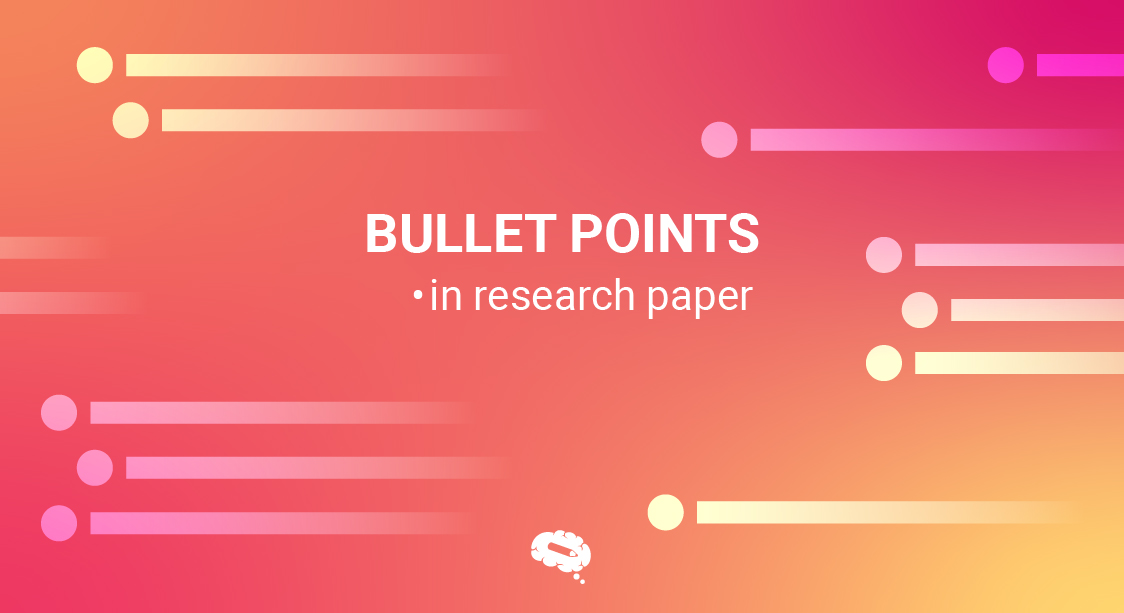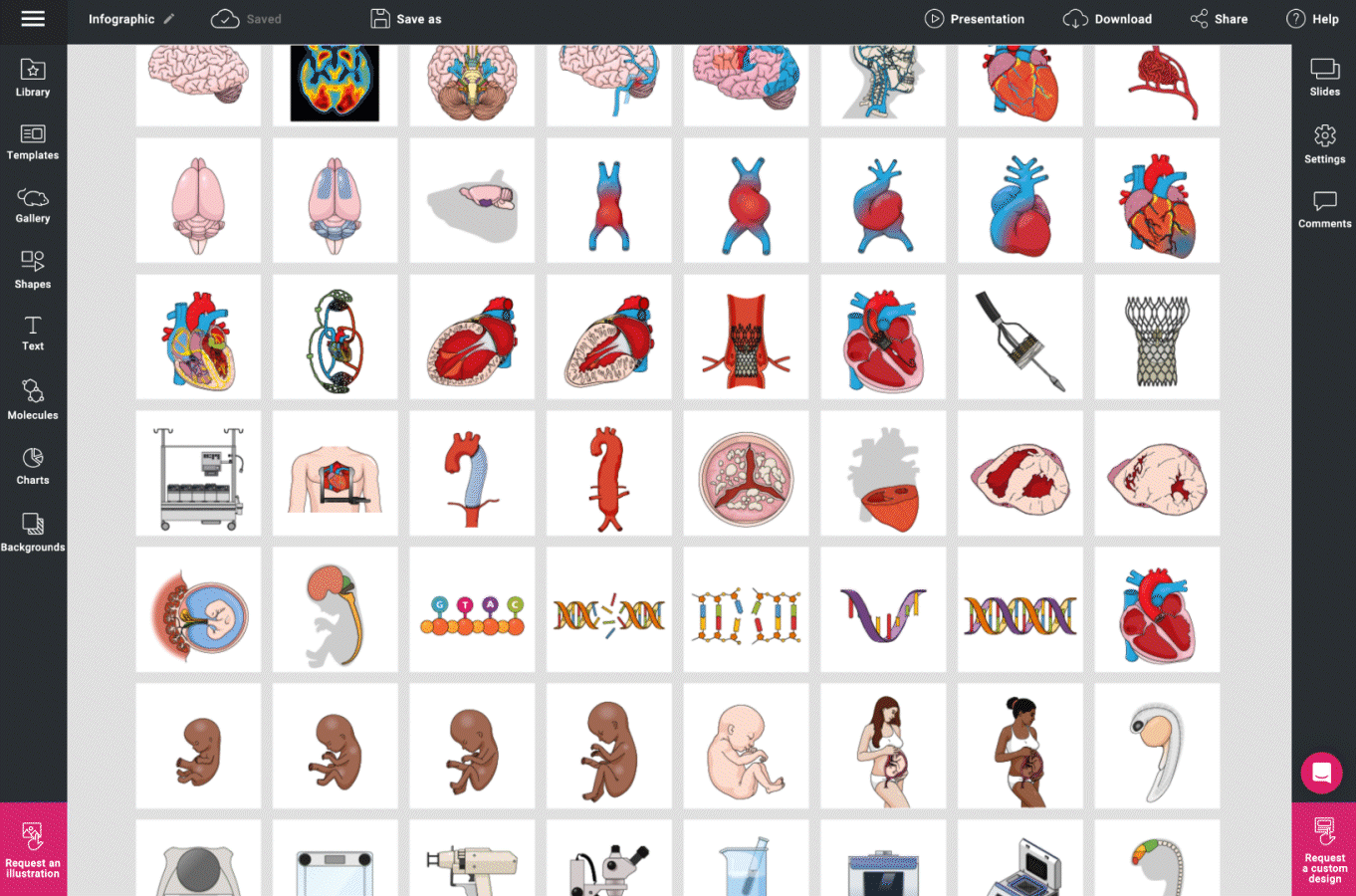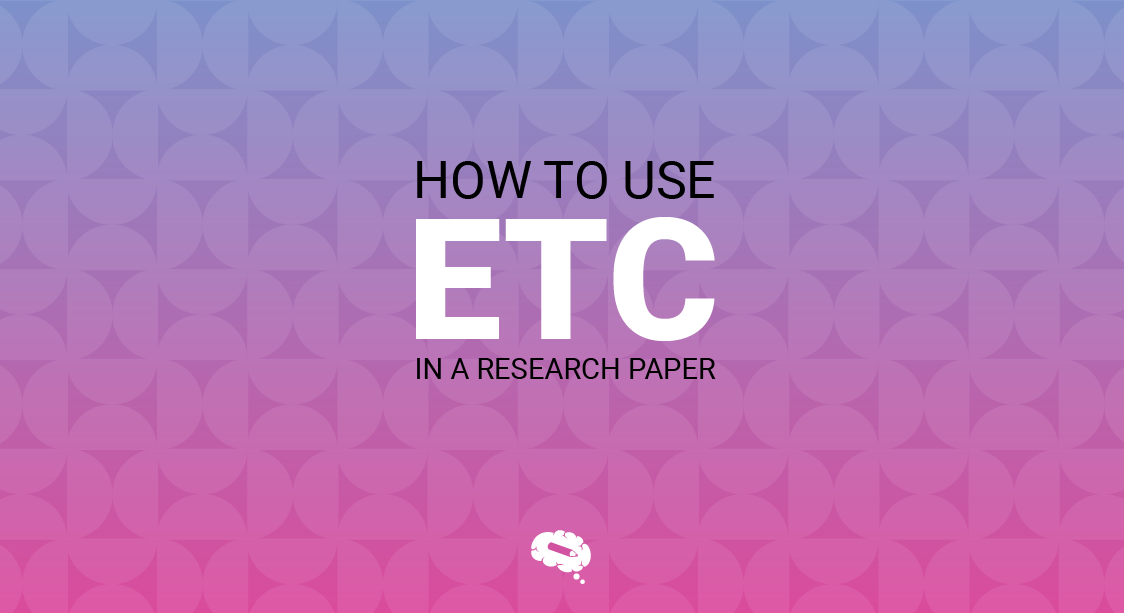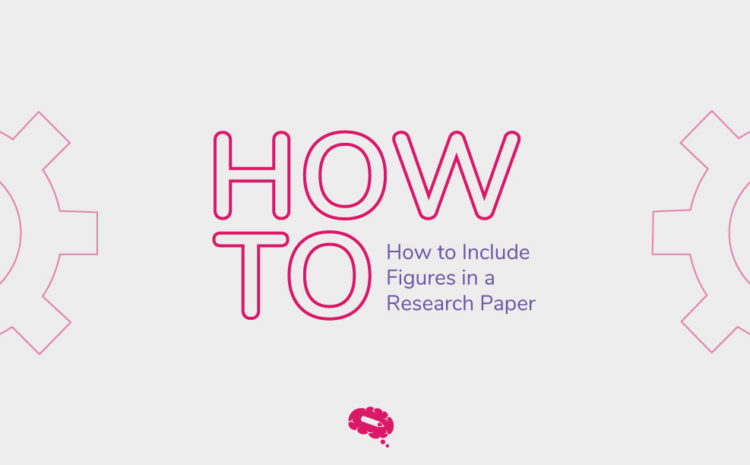Incorporating bullet points in research papers can significantly enhance readability and organization, particularly when presenting complex information. Bullet points serve as a practical tool to break down detailed data into digestible segments, making it easier for readers to follow your argument and absorb key points. In academic articles, bullet points can provide quick overviews and help organize material effectively. By providing clear, concise summaries, bullet points can highlight essential elements without overwhelming the audience with dense paragraphs. Scientific writing has specific requirements for clarity and structure, making the use of bullet points even more crucial. In this guide, we will explore the effective use of bullet points in research papers, discussing best practices and common pitfalls to avoid. Discover how to leverage bullet points to make your research paper more engaging and accessible.
Introduction to Bullet Points
Importance of Bullet Points
Bullet points play a crucial role in research papers by streamlining complex information and presenting it in a more organized manner. They help to break down intricate data sets, theories, or arguments into smaller, more manageable pieces. This not only aids in the clarity of your paper but also ensures that readers can easily follow and understand the main points. Moreover, bullet points can quickly draw attention to essential facts or conclusions, making it easier for readers to identify key takeaways. Well-designed bullet points can attract the reader’s attention when skimming a document, helping them to quickly absorb multiple subtopics. By incorporating bullet points, you can enhance the overall readability of your research, ensuring that your audience remains engaged and retains more information. This method is especially beneficial when dealing with lengthy or detailed sections that might otherwise overwhelm readers if presented in a continuous block of text. Additionally, using bullet points is a valuable strategy for writing professional and interesting academic papers, as it improves the structure and visibility of the text.
When to Use Bullet Points
Knowing when to use bullet points in a research paper is essential to maximize their effectiveness. Bullet points are particularly useful when you need to list multiple items, such as research findings, hypotheses, or key arguments. They are also effective for presenting step-by-step procedures, summarizing complex ideas, or highlighting important facts and statistics. When dealing with long paragraphs that contain several key points, breaking them down into bullet points can make the information more accessible. Following specific guidelines and rules for using bullet lists in academic writing is crucial to ensure clarity and proper formatting.
Using bullet points can also help reduce word count and make the content more succinct, attracting the reader’s attention when skimming a document. However, it is important to use bullet points sparingly to avoid cluttering your paper. Overuse can diminish their impact and make your document look unprofessional. Therefore, reserve bullet points for sections where they can significantly enhance clarity and comprehension, ensuring that your research remains well-structured and reader-friendly.
Bullet Points in Academic Papers
Incorporating bullet points in research papers can significantly improve both the presentation and absorption of information. A well-structured bullet point list, with careful consideration for capitalization, punctuation, and consistency, is especially useful in sections such as literature reviews, methodology, and results, where complex data and numerous details must be communicated clearly. They allow you to summarise literature sources, outline procedural steps, or list significant findings concisely. This concise format helps readers quickly grasp the main points without wading through dense paragraphs. Moreover, bullet points can aid in structuring your argument logically, making it easier for readers to follow your reasoning. List items should be distinct from each other; for example, if the 3rd list item is closely related to the 2nd list item, it should be combined or omitted. It is crucial, however, to ensure that each bullet point is concise and directly relevant to the topic at hand. Unnecessary details should be avoided to maintain the effectiveness and clarity of your list. By thoughtfully using bullet points, you can enhance the readability and impact of your research paper, ensuring that your key messages are communicated effectively.
Formatting Bullet Points
Consistent Style and Structure
Maintaining a consistent style and structure for bullet points in your research paper is vital for coherence and readability. Consistency ensures that your document looks professional and that the information is easily digestible. Start by choosing a uniform bullet style, such as dots, dashes, or numbers, and stick with it throughout your paper to ensure a consistent format. Each bullet point should begin with a capital letter for uniformity and readability. Additionally, keep the length of each bullet point similar; short and concise is usually best. Sentence structure in bullet-point lists is crucial to make the content easier to scan. Avoid mixing full sentences with fragments within the same list. If you use full sentences, punctuate them properly. On the other hand, if you use fragments, omit the final punctuation. This uniformity helps readers focus on the content rather than getting distracted by inconsistent formatting. By adhering to a consistent style and structure, you can enhance the clarity and professionalism of your research paper.
Numbered Lists vs Unnumbered Lists
Choosing between numbered and unnumbered lists depends on the context and purpose of your bullet points in the research paper. Numbered lists are ideal when the order of items is critical, such as step-by-step procedures or ranking of importance. They help readers follow a specific sequence and understand the hierarchy of the points being made. For instance, when outlining the methodology of an experiment, a numbered list can clearly convey the sequence of actions to be taken.
A run-in list, which is included as part of the general text, can be separated in different ways, such as using a colon or numbering the items within the list.
Unnumbered lists, on the other hand, are suitable for presenting items where order does not matter. They are useful for listing related points, characteristics, or examples without implying any particular sequence. For example, when summarizing multiple findings or literature sources, unnumbered lists can present the information in an organized manner without suggesting any precedence. By choosing the appropriate type of list, you can enhance the readability and logical flow of your research paper.
Length and Clarity
The length and clarity of bullet points are crucial for maintaining the effectiveness of your research paper. Each bullet point should be concise, ideally no longer than one or two lines. Brevity ensures that key points are communicated quickly without overwhelming the reader. Avoid lengthy sentences and complex language; instead, use simple, direct wording to convey your message. Each point should be specific and directly related to the main topic, avoiding any unnecessary details that could distract from the core information.
Clarity is equally important. Use precise language and make sure each bullet point is easily understood at a glance. Ambiguity can confuse readers and diminish the impact of your points. If a concept requires further explanation, consider whether it is better suited to a full paragraph rather than a bullet point. By focusing on length and clarity, you ensure that your bullet points effectively highlight critical information, making your research paper more engaging and accessible.
Enhancing Readability
Breaking Down Complex Information
Breaking down complex information into bullet points can significantly enhance the readability of your research paper. It is important to use a complete sentence as the lead-in line for a list. When faced with intricate data, theories, or lengthy explanations, bullet points allow you to present the information in manageable chunks. This segmentation helps readers to digest and retain the material more efficiently. Instead of navigating through dense paragraphs, readers can quickly scan bullet points to grasp the essential points.
For example, if you are presenting the results of a multifaceted study, bullet points can summarise key findings, making it easier for readers to understand the outcomes without getting lost in elaborate details. Additionally, bullet points can highlight specific aspects of a theory or model, providing clear and concise explanations. This approach not only makes your paper more accessible but also ensures that the critical information stands out, helping your audience to focus on the most important elements of your research. By breaking down complex information, you enhance both comprehension and engagement.
Visual Appeal and Spacing
The visual appeal and spacing of bullet points play a crucial role in enhancing the readability of your research paper. Proper spacing between bullet points ensures that each point stands out clearly, preventing the text from appearing cluttered. Adequate white space around bullet points makes the content more inviting and easier to navigate, allowing readers to quickly find and understand the information. Best practices for writing and formatting bulleted lists include tips for consistent punctuation usage and adjusting indents and spacing to make the list visually appealing and easy to scan.
In addition to spacing, the alignment and indentation of bullet points contribute to a clean and organised appearance. Consistent indentation helps maintain a structured look, making the document appear more professional. Furthermore, using bullet points with a simple design, such as dots or dashes, avoids visual distractions and keeps the focus on the content.
Incorporating headings or subheadings above groups of bullet points can also improve visual appeal by breaking up the text and providing context. By paying attention to visual appeal and spacing, you can make your research paper more reader-friendly and engaging.
Using Bullet Points for Emphasis
Using bullet points for emphasis can significantly enhance the impact of your research paper. Bullet points naturally draw the reader’s eye, making them an effective tool for highlighting crucial information, key findings, or important arguments. When you want to ensure that certain points are not overlooked, presenting them in a bulleted format can make them stand out from the surrounding text.
For instance, summarising critical results or pivotal conclusions in bullet points can underscore their importance, ensuring that readers pay special attention. Additionally, bullet points can be used to emphasize comparisons, contrasts, or lists of advantages and disadvantages, making these elements more conspicuous and easier to follow.
However, to maintain their effectiveness, use bullet points judiciously. Overemphasizing too many points can dilute their impact and make the document appear cluttered. By strategically using bullet points for emphasis, you can enhance the clarity and persuasiveness of your research paper, guiding readers to focus on the most significant aspects of your work.
Common Mistakes to Avoid
Overuse of Bullet Points
While bullet points can enhance readability and organisation, overusing them in your research paper can be counterproductive. Excessive use of bullet points can make your document appear fragmented and unstructured, detracting from the flow of your narrative. When too many points are bulleted, the reader may struggle to see the connections between them, leading to confusion and a lack of cohesion in your argument.
Moreover, overloading your paper with bullet points can diminish their impact. If every other paragraph is a list, the emphasis intended by using bullet points is lost. To avoid this, use bullet points selectively, reserving them for sections where they genuinely add value by improving clarity and highlighting key information.
Balance is key; combine bullet points with well-written paragraphs to maintain a smooth and engaging flow. By avoiding the overuse of bullet points, you can ensure that your research paper remains coherent, impactful, and professional.
Inconsistent Formatting
Inconsistent formatting of bullet points can undermine the professionalism and readability of your research paper. Variations in bullet styles, indentation, or punctuation can distract readers and disrupt the flow of information. For example, mixing dots and dashes or alternating between full sentences and fragments within the same list can create confusion and make your document appear disorganised.
To avoid these issues, establish and adhere to a consistent formatting style for your bullet points. Choose one type of bullet (e.g., dots, dashes, or numbers) and stick with it throughout the paper. Ensure that each bullet point follows the same structure, either using complete sentences with appropriate punctuation or fragments without end punctuation.
Additionally, maintain uniform indentation and spacing for all bullet points to enhance visual appeal and clarity. Consistent formatting not only makes your research paper easier to read but also conveys a sense of meticulousness and attention to detail. By avoiding inconsistent formatting, you can produce a more polished and professional research document.
Irrelevant Information
Including irrelevant information in your bullet points can dilute the effectiveness of your research paper. Bullet points are meant to highlight key points and essential information, so adding extraneous details can overwhelm readers and obscure the main message. Irrelevant information can lead to confusion and distract from the critical points you aim to communicate.
To avoid this mistake, carefully evaluate the content of each bullet point. Ensure that every item directly relates to the main topic or argument you are addressing. If a piece of information does not add value or clarify your point, it is best left out. Aim for precision and relevance, focusing on the most significant aspects that support your research.
By keeping your bullet points concise and relevant, you maintain the clarity and impact of your paper. This approach not only enhances readability but also ensures that your audience can easily follow and understand the core elements of your research.
Practical Examples and Tips
Effective Bullet Points in Action
To illustrate effective bullet points in action, consider a section summarising key findings of a study on climate change. Instead of a dense paragraph, use bullet points to highlight the main results:
- Temperature Increase: Global temperatures have risen by 1.2°C over the past century.
- Sea Level Rise: Average sea levels have increased by 20 centimetres in the last 50 years.
- Glacial Retreat: Significant glacial melting has been observed in both polar regions.
- Extreme Weather Events: There has been a 30% increase in the frequency of extreme weather events, such as hurricanes and heatwaves.
These bullet points are concise, directly relevant, and formatted consistently, making it easy for readers to grasp the critical findings at a glance. Each point uses clear and straightforward language, ensuring that even those unfamiliar with the topic can understand the main conclusions. By employing bullet points in this manner, you enhance the readability and impact of your research, making your key points stand out effectively.
Editing and Revising Bullet Points
Editing and revising bullet points is crucial to ensure they are clear, concise, and effective. Start by reviewing each bullet point to verify its relevance and alignment with the main topic. Remove any redundant or irrelevant information that could distract from the key message.
Next, focus on clarity. Make sure each bullet point is easily understandable at a glance. Use simple and direct language, avoiding jargon and overly complex sentences. If necessary, rephrase points to enhance readability.
Consistency is another important aspect. Check that each bullet point follows the same structure and style, whether that means using full sentences or fragments. Ensure uniform punctuation and indentation for a polished appearance.
Finally, consider the overall flow and organisation. Arrange bullet points logically, so that they build upon each other coherently. By meticulously editing and revising your bullet points, you can significantly improve the clarity and impact of your research paper, making it more engaging and accessible for your readers.
Final Checklist for Bullet Points
Before finalizing your research paper, run through a checklist to ensure your bullet points are as effective as possible:
- Relevance: Verify that each bullet point directly relates to the main topic or argument.
- Clarity: Ensure each point is easily understandable, using clear and straightforward language.
- Conciseness: Keep points brief and to the point, avoiding unnecessary details.
- Consistency: Check for uniform formatting, including bullet style, indentation, and punctuation.
- Logical Order: Arrange bullet points in a logical sequence that enhances the flow of information.
- Impact: Assess whether the bullet points highlight the most critical aspects of your research, ensuring key messages stand out.
- Visual Appeal: Make sure there is adequate spacing between bullet points for a clean and organized appearance.
By following this checklist, you can enhance the readability, coherence, and professionalism of your research paper, ensuring that your bullet points effectively communicate the essential information to your audience.
Transform Your Scientific Visuals with Mind the Graph
Mind the Graph is a powerful tool designed to help scientists and researchers create visually appealing and scientifically accurate illustrations. With its user-friendly interface, extensive library of pre-made templates, and customizable graphics, it streamlines the process of visual communication in scientific research. Whether you’re preparing a presentation, designing a poster, or creating a graphical abstract for a research paper, Mind the Graph provides the resources you need to convey complex information clearly and effectively. By making high-quality visual content accessible and easy to produce, Mind the Graph empowers researchers to enhance their work’s impact and reach. Start transforming your scientific visuals today by signing up and exploring all that Mind the Graph has to offer.

Subscribe to our newsletter
Exclusive high quality content about effective visual
communication in science.





